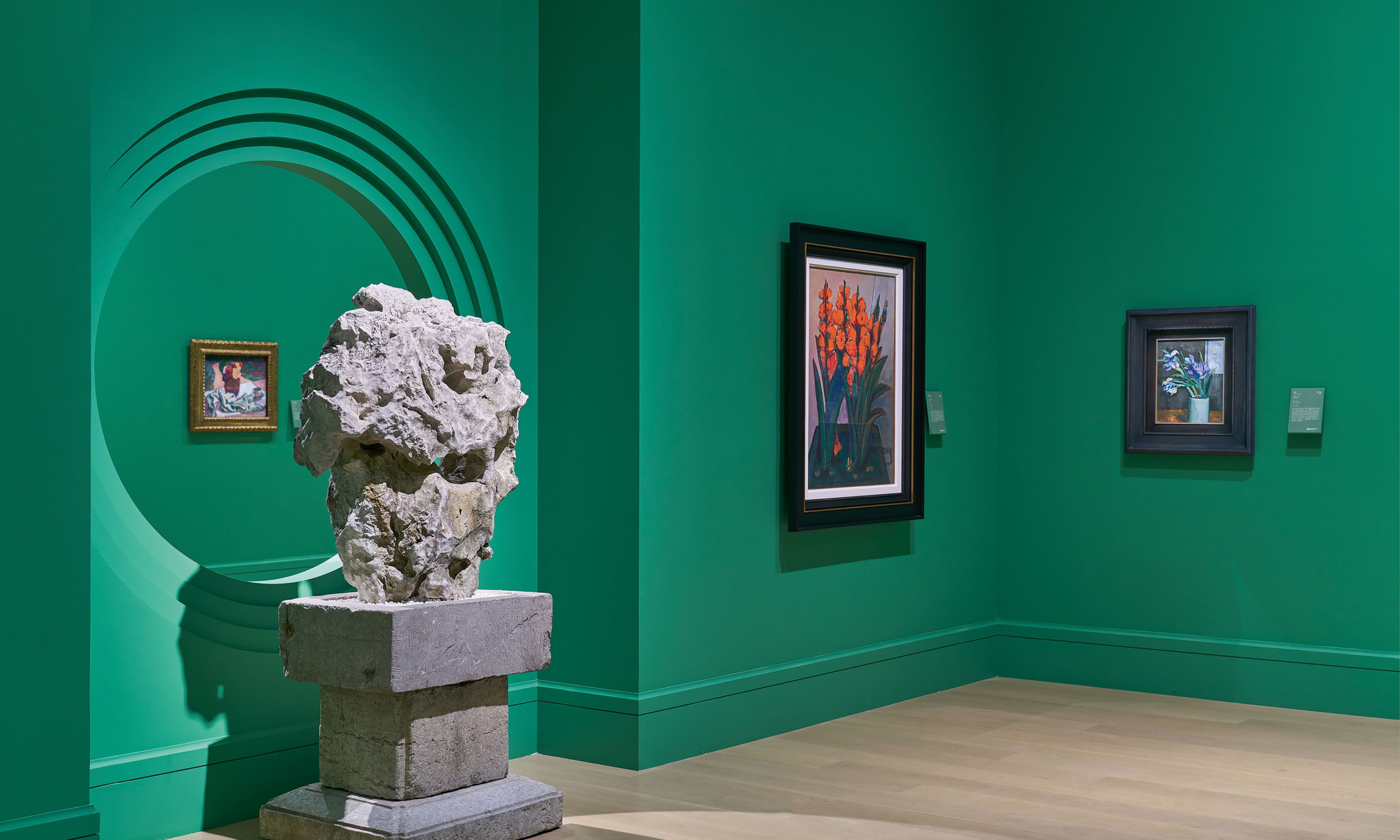A Taihu stone from Nothing Still About Still Lifes, surrounded by works representing the aesthetic of Chinese gardens Courtesy of Deji Art Museum
For a businessman and museum founder named among the world’s “Top 200 Collectors” by ARTnews last year, Nanjing-based Wu Tiejun is remarkably discreet. He has never given interviews about his collection before and declined to provide a photograph of himself to The Art Newspaper to accompany this questionnaire.
Wu prefers to give the spotlight to the Nanjing museum he founded in 2017 through his real-estate development company, Deji Group. The Deji Art Museum is located on the eighth floor of the group’s high-rise office and luxury shopping complex, Deji Plaza Phase II. A second location, designed by the architect Kengo Kuma, is planned for 2026 near the base of Zijin Mountain in the east of the city. With more than 10,000 works and counting, the museum’s collection ranges from ancient Chinese jades and earthenware ceramics dating back to the Neolithic period up to Beeple’s futuristic video sculpture S.2122 (2023), purchased at last year’s Art Basel Hong Kong.
A gilt bronze Śākyamuni statue (14th century) Courtesy of Deji Art Museum
Wu began his personal collecting journey 30 years ago with an enthusiasm for Chinese antiquities and Buddhist sculptures, which have roots in his childhood in Nanjing, an ancient capital of China. Deji Art Museum’s collection reflects Wu’s early focus, which represents all the major categories of Chinese art, with an emphasis on local classical painters. But the museum is also building up considerable holdings of Modern and contemporary art by the likes of Claude Monet, Pablo Picasso, Georgia O’Keeffe, Yayoi Kusama and David Hockney, guided by overarching curatorial themes. The subject of its latest exhibition, for instance, is 300 years of floral compositions (Nothing Still About Still Lifes, running until 31 March).
How did you first get turned on to art?
My earliest exposure to art came from playing in the entrance courtyards of the Nanjing Museum and the Chaotian Palace during my childhood. Nanjing has served as the metropolis for ten different dynasties in China and it is also a prominent Buddhist pilgrimage site, which explains my enthusiasm for collecting Buddhist statues, Ming furniture, Song porcelain and other related artefacts.
What was the first work you ever bought?
A Buddha statue.
How quickly do you decide to buy a work of art?
One minute.
Do you have a favourite work of art in your collection?
Taihu stones [naturally formed porous rocks prized for their sculptural properties] hold a special place in my heart. I believe that it serves as a synthesis of art—across different eras and countries, people have consistently gravitated towards Taihu stones as the pinnacle of their pursuit of art. Emperor Huizong of the Song dynasty recognised their significance.
If you could have any work from any museum in the world, what would it be?
I would choose to return the most beautiful stone sculptures to their rightful places.
What are you looking out for at Art Basel Hong Kong this year?
I am eagerly looking forward to a good selection of sculptural works that resonate with the concept of blackness. Our Deji Art Museum team has previously undertaken significant and methodical acquisitions related to floral art.
The initial collection was largely influenced by my personal preferences and fondness for art. However, as the museum has grown to a certain scale, our contexts and systems for collecting have become clearer and more distinct.
What tip would you give to someone visiting Hong Kong for the first time?
I recommend that they go and visit the Hong Kong Palace Museum and M+.
Where do you like to eat and drink in Hong Kong?
I enjoy dining at the street food stalls, which are called dai pai dong, in the Lei Yue Mun fishing village.
What’s your least favourite thing about art fairs?
The show floor layouts. They often disorientate me and make me feel quite dizzy.

